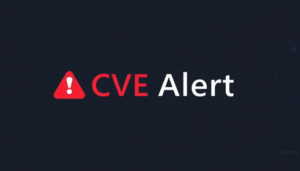CVE Alert: CVE-2025-59511 – Microsoft – Windows 10 Version 1809
CVE-2025-59511
External control of file name or path in Windows WLAN Service allows an authorized attacker to elevate privileges locally.
AI Summary Analysis
Risk verdict
High risk of local privilege escalation via Windows WLAN Service; exploitation state is uncertain, but the potential impact warrants prompt remediation.
Why this matters
If an attacker can trigger the vulnerability, they could elevate privileges locally and target other assets on the same host. The issue affects a broad set of Windows desktop and server releases, expanding the potential blast radius across endpoints and server roles.
Most likely attack path
Exploitation requires local access with low complexity and no user interaction. An attacker could manipulate the file name or path used by the WLAN service so it loads an attacker-controlled file, executing with high privileges. This enables covert code execution within the service context and could facilitate further compromise or lateral movement using the host’s credentials.
Who is most exposed
Typical exposure is in organisations with widespread Windows deployments of client OS and Server variants listed, including enterprise desktops, servers (including Server Core), and virtualised/Cloud images where WLAN service is active or enabled.
Detection ideas
- Monitor for attempts to load files from unusual or user-controlled directories by the WLAN Service.
- Look for unexpected file path or name patterns tied to WLAN-related processes.
- Detect anomalous service startup or module loading events involving WLAN services.
- Correlate rare privilege escalations or new process trees originating from WLAN service processes.
- Audit changes to WLAN service configuration or dependencies.
Mitigation and prioritisation
- Apply the official Microsoft security update across all affected OS versions; verify patch success in test and production.
- If patching is delayed, implement compensating controls: restrict access to directories loaded by WLAN service, enable least-privilege for the service, and enforce application whitelisting.
- Validate change-management and rollback plans; document asset coverage and patch status.
- If KEV is confirmed or EPSS ≥ 0.5, treat as priority 1. If KEV/EPSS data is unavailable, proceed with standard remediation urgency.
Support Our Work
A considerable amount of time and effort goes into maintaining this website, creating backend automation and creating new features and content for you to make actionable intelligence decisions. Everyone that supports the site helps enable new functionality.
If you like the site, please support us on Patreon or Buy Me A Coffee using the buttons below.


